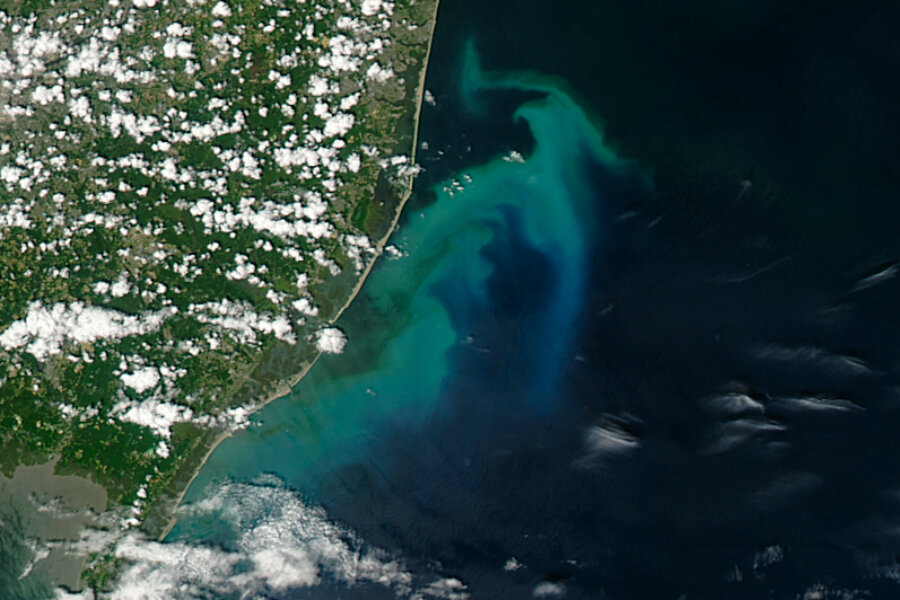What's making the water off New Jersey turn aquamarine?
Turquoise waters reminiscent of a Caribbean island have replaced the New Jersey’s typically murky coast for the past week, thanks to combination of phytoplankton and unusual weather conditions.
The phytoplankton bloom behind the color shift was photographed on July 6 by the Moderate Resolution Imaging Spectroradiometer on NASA's Aqua satellite, which gathers data on the Earth's water cycle.
Unlike the toxic algae bloom currently choking Florida waters, New Jersey's phytoplankton bloom is a harmless, annual phenomenon.
Phytoplankton are microscopic and cannot be seen by the naked eye, but they do “contain chlorophyll, that when exposed to sunlight, reflect the turquoise-green wavelengths and change the coloring of the water," Elizabeth Lacey, assistant professor of marine science at Stockton University told the Press of Atlantic City.
The abundance of nutrients needed for phytoplankton to bloom in such a way typically comes from polluted inland waters, but in this case it is the result of upwelling, which occurs when winds blow the surface waters away from the shoreline, and cooler, nutrient-rich waters from below move up to it fill in to take their place.
“These upwellings occur every summer, and fuel large phytoplankton blooms,” Oscar Schofield, a marine scientist at Rutgers University in New Jersey told NASA. “Studies have suggested these summer upwelling events occur several times each summer and lead to large blooms that can discolor the water.”
An additional reason for the unusually clear waters could be a drop in the amount of freshwater making its way to the ocean this year because of a drought across the Northeast.
“Tropical water doesn’t have the river or bay runoff to make it brown or cloudy,” Stewart Farrell, director of the Coastal Research Center at Stockton University told the Press of Atlantic City.
These blooms are often harmless and can even provide an important food source for the marine food chain, but in other cases they deplete the water’s oxygen levels causing other marine life to suffocate, or even produce harmful toxins, as is currently occurring in Florida’s Lake Okeechobee.
New Jersey's phytoplankton bloom has not produced these toxins, leaving the water safe for the ecosystem, recreation, and tourism – a big part of the coastal economy. Bob Chant, a professor of marine sciences at Rutgers University says that the waters are likely to remain discolored until winds push the bloom up the coast or out to sea.







